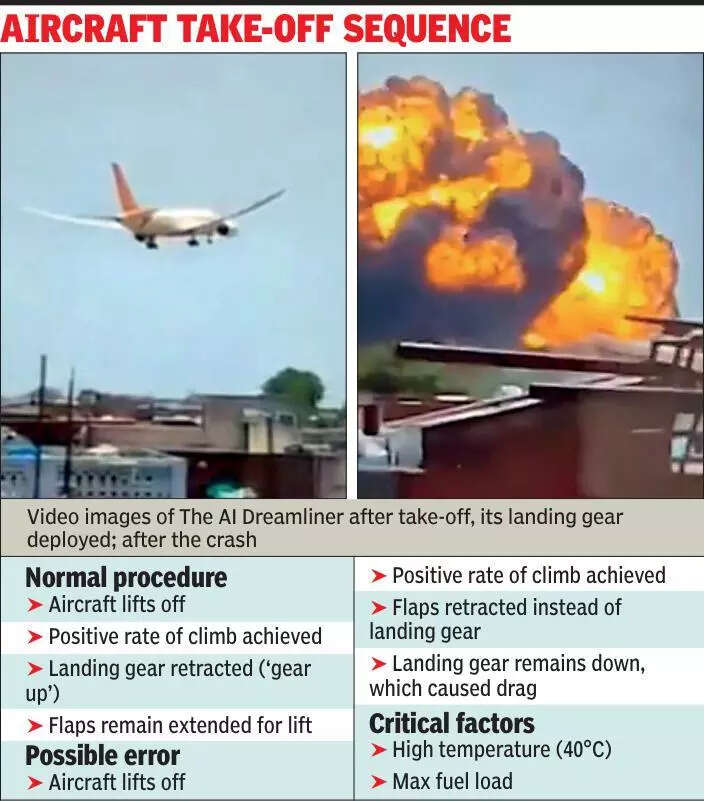Understanding the Air India Dreamliner Take-Off Incident
Experienced Pilots Share Insights on Possible Mistakes
Seasoned pilots have shared their thoughts on what might have gone wrong during the Air India Dreamliner’s take-off. They suggest a couple of possible errors. One is that the pilots might have turned off the second engine by mistake if the first one stalled. Another is that they might have retracted the flaps instead of the landing gear.
What Happens During Take-Off?
After take-off, the monitoring pilot checks how fast the plane is climbing. Once it’s going up steadily, the flying pilot confirms and tells the crew to retract the landing gear. This usually happens when the plane is about 100 feet above the ground. The idea is to reduce drag and help the plane lift better. But sometimes, mistakes can happen here.
“The pilot might have put up the flaps instead of the gear,” explained a pilot with lots of experience. Flaps are really important for lift, especially when the plane is heavy with fuel for a long trip.
What Are the Experts Looking Into?
Experts are looking at the flight data and cockpit voice recorders to understand what happened. Videos show that the landing gear was still down when the plane went above 600 feet before it started to descend and crashed. But the video isn’t clear enough to see the flap positions.
- Putting up the flaps while the landing gear is still down can reduce lift.
- The plane needed as much lift as possible because it was carrying fuel for a 10-hour flight.
- The landing gear was still down when the plane crashed, which might mean the pilots were distracted or made a mistake.
Challenging Weather Conditions
The weather in Ahmedabad was very hot, around 40°C. Hot air is thin air, which can make it harder for the plane to lift and for the engines to work well. This can make take-off and climbing more difficult.
Pilot Experience and Training Matters
The crew was experienced. Captain Sumeet Sabharwal had 8,200 hours of flying time, and First Officer Clive Kunder had 1,100 hours. But a source pointed out that the co-pilot had flown an Airbus A320 before training on the Boeing Dreamliner.
“Different plane makers have different cockpit setups,” the source explained. “Pilots should ideally move up within the same maker’s plane family. The co-pilot should have moved to an A330, but the lack of pilots might have made this difficult.”
Possible Distractions and Safety Features
Another pilot suggested that something might have distracted the crew during the final take-off. This could have led to mistakes with little time to fix them. But another experienced pilot disagreed. They highlighted the Boeing Dreamliner’s advanced safety features.
- It stops the plane from stalling by limiting how much the nose can point up.
- It controls speed by adjusting the elevator and auto-throttle.
- It automatically trims the plane for stability.
- It has safeguards against extreme banking angles and G-force loads.
Little Time for Corrective Action
Pilots agree that no matter what caused the incident, it happened when there was very little time to fix it. More height would have given more time to react, but the 20 seconds they had weren’t enough.




